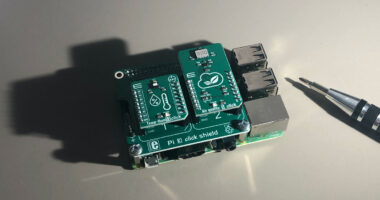Soft wearable robot improves arm function for people with ALS
Study: New device can make it easier to do day-to-day tasks

A wearable robotic device that helps lift the shoulders to support arm movements can make it easier for people with amyotrophic lateral sclerosis (ALS) to do daily tasks, a new study reports.
Using the lightweight device — now a fabric-based robot prototype — led to significant improvements in upper arm and shoulder function in ALS patients, according to researchers.
“This study gives us hope that soft robotic wearable technology might help us develop new devices capable of restoring functional limb abilities in people with ALS and other diseases that rob patients of their mobility,” Conor Walsh, PhD, a professor at Harvard University and senior author of the study, said in a university press release.
The study, “Restoring arm function with a soft robotic wearable for individuals with amyotrophic lateral sclerosis,” was published in Science Translational Medicine.
New robotic device shown to improve arm movement
ALS is characterized by the progressive death of motor neurons, the nerve cells responsible for controlling muscle movement. This results in symptoms like muscle weakness, and most people with ALS will eventually experience difficulty moving their body.
“As we work to develop new disease-modifying treatments that will prolong life expectancy, it is imperative to also develop tools that can improve patients’ independence with everyday activities,” said Sabrina Paganoni, MD, PhD, study co-author from the Massachusetts General Hospital’s Healey & AMG Center for ALS.
The new device is “basically a shirt with some inflatable, balloon-like actuators under the armpit,” according to Tommaso Proietti, PhD, a former postdoctoral fellow at Harvard and the study’s lead author.
“Our vision is that these robots should function like apparel and be comfortable to wear for long periods of time,” Walsh said.
Looking into people’s eyes as they performed tasks and experienced movement using the wearable [robot], hearing their feedback that they were overjoyed to suddenly be moving their arm in ways they hadn’t been able to in years, it was a very bittersweet feeling.
Put simply, the device uses sensors to detect subtle movements of the wearer’s arm. Upon sensing movement, the balloon-like actuators under the arms will inflate, helping to lift the upper arm and shoulder.
“These systems are also very safe, intrinsically, because they’re made of fabric and inflatable balloons,” Proietti said.
“As opposed to traditional rigid robots, when a soft robot fails it means the balloons simply don’t inflate anymore. But the wearer is at no risk of injury from the robot,” Proietti added.
In the study, the researchers reported on the design of the system and its use by 10 people with ALS with different degrees of limb impairment. Results showed that the device took participants less than 15 minutes to learn to use — and its use resulted in a greater range of motion, less muscle fatigue, and better performance in tasks involving holding or reaching for objects.
Without any training, use of the robotic wearable “can improve functional activity without any training, restoring performance of basic activities of daily living,” the researchers wrote.
Proietti said the feedback from the ALS patients in the study was motivating for researchers.
“Looking into people’s eyes as they performed tasks and experienced movement using the wearable, [and] hearing their feedback that they were overjoyed to suddenly be moving their arm in ways they hadn’t been able to in years, it was a very bittersweet feeling,” said Proietti.
One important constraint, according to researchers, is that the current version of the device only works for individuals who still have some ability to move their arms. That’s because the robot works by detecting subtle arm movements.
The team is exploring ways to create a wearable robotic device that could be controlled by signals in the brain. The ultimate goal would be helping people with ALS at later stages to move around.
“Soft robotic wearables are an important advancement on the path to truly restored function for people with ALS,” Paganoni said.
“We are grateful to all people living with ALS who participated in this study: it’s only through their generous efforts that we can make progress and develop new technologies,” she said.
This research has received funding from the National Science Foundation, the Cullen Education and Research Fund (CERF), and the Harvard School of Engineering and Applied Sciences. Some of the CERF funding came from a medical engineering prize awarded last year to researchers at Harvard and other U.S. universities.







